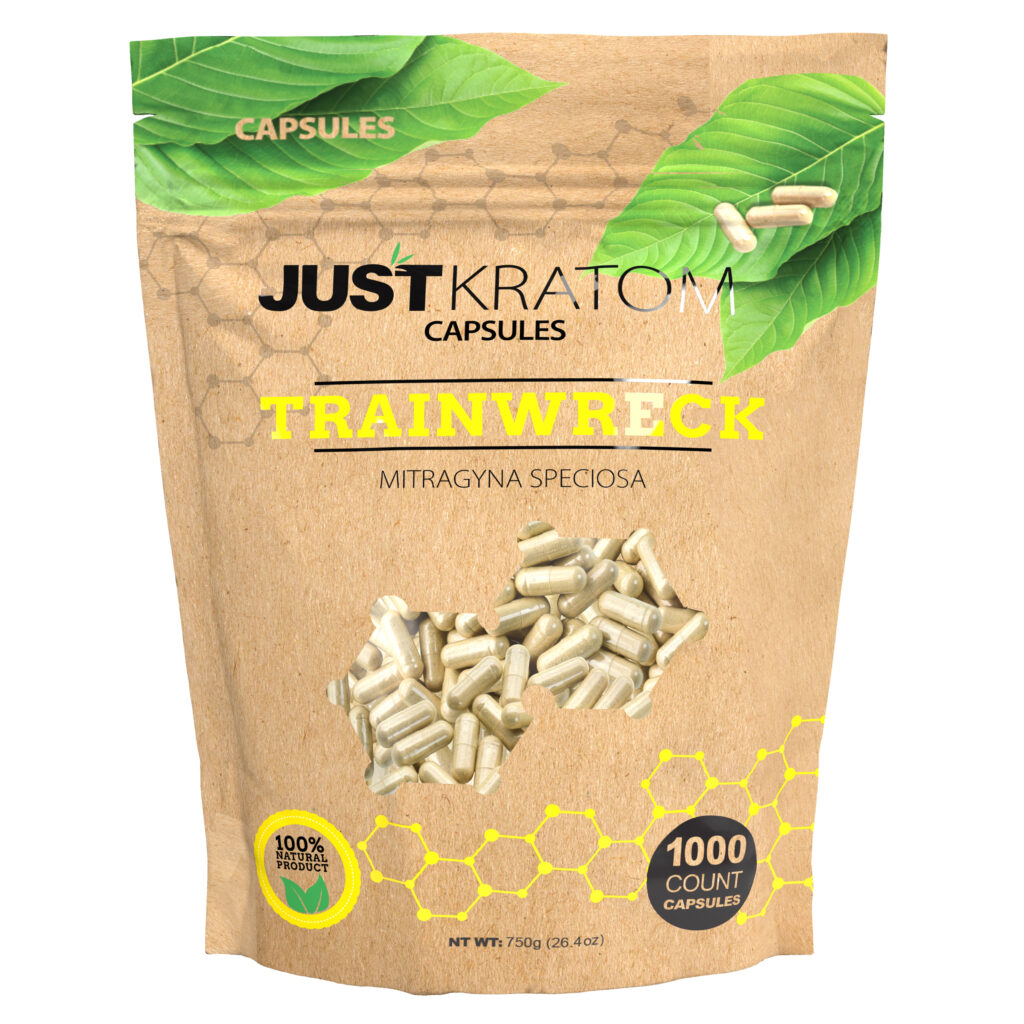What is Kratom?

Kratom, a tropical evergreen tree native to Southeast Asia, has gained global attention for its purported medicinal and psychoactive effects. Derived from the leaves of this plant, kratom contains alkaloids that interact with opioid receptors in the brain. These alkaloids can produce a range of effects, including pain relief, energy boost, and euphoria.
Definition and Origins
Kratom is a tropical evergreen tree native to Southeast Asia known scientifically as *Mitragyna speciosa*. For centuries, kratom has been used traditionally in these regions for its potential medicinal and psychoactive properties.
The leaves of the kratom tree contain alkaloids, including mitragynine and 7-hydroxymitragynine, which interact with opioid receptors in the brain. These alkaloids are responsible for the various effects associated with kratom consumption, ranging from pain relief and energy enhancement to mood elevation and relaxation.
Chemical Composition
The leaves of the kratom tree contain a variety of alkaloids, primarily mitragynine and 7-hydroxymitragynine. These alkaloids are structurally similar to opioid compounds, allowing them to bind to opioid receptors in the brain.
Mitragynine is the most abundant alkaloid in kratom and is believed to be responsible for many of the plant’s effects, including pain relief and sedation. 7-hydroxymitragynine, on the other hand, has a more stimulating effect and may contribute to kratom’s energy-boosting properties.
Kratom’s Effects
The potential for addiction is a significant concern surrounding kratom use. While some individuals may experience occasional mild dependence, the addictive nature of kratom is complex and not fully understood.
Stimulating Effects at Low Doses
At low doses, Kratom can produce stimulating effects. These can include increased energy levels, enhanced focus, and a sense of well-being.
This stimulation is thought to be mediated by the alkaloid 7-hydroxymitragynine, which interacts with opioid receptors in the brain but in a different manner than traditional opioids like morphine.
The stimulating effects at low doses are often described as being similar to those of caffeine or a light energy drink.
Sedative Effects at Higher Doses
As kratom doses increase, the effects shift from stimulating to sedative. At higher doses, mitragynine becomes more prominent, leading to feelings of relaxation, drowsiness, and even sleepiness.
This sedative effect is similar to that of opioids like morphine but generally less potent.

Potential Medicinal Uses
Kratom’s effects are diverse and depend on the dose consumed. At lower doses, kratom can act as a stimulant, producing feelings of increased energy, focus, and well-being. This is attributed to the alkaloid 7-hydroxymitragynine, which interacts with opioid receptors in the brain differently than traditional opioids.
As doses increase, the effects transition from stimulating to sedative. Higher doses lead to relaxation, drowsiness, and sleepiness, primarily due to the influence of mitragynine. This sedative effect resembles that of opioids but is generally milder.
Kratom’s potential medicinal uses are being explored, with some research suggesting its effectiveness in managing pain, particularly chronic pain. Other areas of investigation include its potential for treating opioid withdrawal symptoms and addressing conditions like depression and anxiety. However, more research is needed to fully understand kratom’s therapeutic benefits and risks.
Addiction Potential of Kratom Capsules
Kratom capsules, derived from the leaves of the Southeast Asian tropical evergreen tree *Mitragyna speciosa*, are gaining popularity due to their purported medicinal and psychoactive effects. These capsules contain alkaloids that interact with opioid receptors in the brain, producing a range of potential benefits and risks.
Signs and Symptoms of Kratom Addiction
The addictive potential of kratom capsules is a complex and controversial issue. While kratom can produce pleasurable effects similar to opioids, it does not have the same structure as traditional opioids. Some individuals may experience mild dependence after prolonged use, but research on the long-term addictive potential of kratom is limited.
Signs and symptoms of kratom addiction can include withdrawal symptoms such as irritability, anxiety, muscle aches, insomnia, and gastrointestinal distress when attempting to cease use. Other signs may include a preoccupation with obtaining and using kratom, neglecting responsibilities, and continuing to use despite negative consequences.
Withdrawal Symptoms
Kratom capsules contain alkaloids that can interact with opioid receptors in the brain, producing effects ranging from stimulation to sedation. While some individuals may experience mild dependence, the addictive potential of kratom is complex and not fully understood.
Withdrawal symptoms associated with kratom cessation can include irritability, anxiety, muscle aches, insomnia, and gastrointestinal distress. Other signs of potential addiction may include a preoccupation with obtaining and using kratom, neglecting responsibilities, and continuing use despite negative consequences.
Factors Contributing to Addiction Risk
The addictive potential of kratom capsules is a complex issue influenced by several factors. While kratom does not have the same structure as traditional opioids, its alkaloids can interact with opioid receptors in the brain, leading to pleasurable effects that may contribute to dependence.
Several factors can increase the risk of addiction when using kratom capsules. These include a history of substance abuse, mental health disorders such as anxiety or depression, and genetic predispositions. Using kratom regularly and in high doses can also elevate the risk of developing dependence.
It’s important to note that individual responses to kratom vary greatly. While some people may use kratom without experiencing addiction, others may be more susceptible to developing dependence.
Scientific Evidence and Research
Scientific evidence plays a crucial role in understanding the potential risks and benefits of any substance, including kratom capsules. Researchers utilize various methods, such as clinical trials, animal studies, and laboratory analyses, to gather data about kratom’s effects on the body and brain.
Existing Studies on Kratom Addiction
Scientific evidence regarding kratom addiction is still developing, with ongoing research exploring its potential for dependence and long-term health effects. While some studies suggest a risk of addiction, particularly with prolonged use and high doses, more comprehensive research is needed to fully understand the extent and nature of kratom’s addictive properties.
- Some studies indicate that individuals who misuse kratom may experience withdrawal symptoms similar to those seen in opioid dependence.
- Other research explores the neurobiological mechanisms underlying kratom’s effects, aiming to shed light on its potential for addiction.

Limitations of Current Research
Scientific evidence regarding the addictive potential of kratom capsules is still evolving. While some studies suggest a risk of dependence, particularly with prolonged use and high doses, research in this area is ongoing and limited.
One of the limitations of current research is the relatively recent attention given to kratom as a substance of interest. Compared to substances like opioids or alcohol, there has been less extensive research dedicated to understanding kratom’s long-term effects, including its addictive potential.
Another challenge in studying kratom addiction is the variability in kratom products. Kratom leaves can contain varying concentrations of different alkaloids, and production processes can influence the final product’s potency. This makes it difficult to standardize research studies and draw definitive conclusions about kratom’s addictive properties.
Furthermore, access to reliable data on kratom use patterns and prevalence is limited. Self-reported data can be subject to bias, and formal tracking systems for kratom use are not as comprehensive as those for other substances.
Regulation and Legal Status
The legal status of kratom varies significantly across the globe. Some countries have outright banned its use and sale, while others allow it with regulations or restrictions. In the United States, kratom exists in a legal gray area, with some states prohibiting it and others permitting its sale. This complex regulatory landscape makes it difficult to navigate the legality of kratom and raises concerns about consumer safety and access to accurate information.
Kratom’s Legal Standing in Different Countries
The legal status of kratom varies widely around the world.
- United States: Kratom’s legal status in the US is a patchwork, with varying regulations across states. Some states have banned it entirely, while others allow its sale with restrictions.
- European Union: Most European countries have classified kratom as a controlled substance, prohibiting its sale and use.
- Southeast Asia: Kratom is traditionally used in countries like Thailand, Malaysia, and Indonesia, where it has a long history of medicinal and cultural significance. However, some of these countries have implemented regulations or restrictions on kratom cultivation and sale.
- Australia:**
- Canada: Kratom is considered a controlled substance in Canada and is illegal to possess or sell.
Kratom is classified as a Schedule 9 drug in Australia, meaning it is illegal to possess or sell.
Potential for Future Regulations
The legal status of kratom is complex and varies significantly around the world. Some countries have completely banned its use and sale, while others permit it with regulations or restrictions. In the United States, kratom exists in a legal gray area, with some states prohibiting it and others allowing its sale.
This lack of uniformity raises concerns about consumer safety and access to accurate information. The potential for future regulation is high as governments worldwide grapple with the complex issues surrounding kratom’s use, risks, and benefits.
Addressing Kratom Use Safely
Kratom, a tropical evergreen tree native to Southeast Asia, has gained global attention due to its purported medicinal and psychoactive effects. However, concerns about its addictive potential have sparked debate and scrutiny. Understanding the facts about kratom’s effects and risks is crucial for informed decision-making regarding its use.
Responsible Consumption Guidelines
Addressing kratom use safely requires responsible consumption guidelines and a clear understanding of its potential risks and benefits. Kratom, a tropical evergreen tree native to Southeast Asia, contains alkaloids that interact with opioid receptors in the brain, producing a range of effects from energy boosts to pain relief.
While kratom may have therapeutic potential, it’s essential to be aware of its addictive properties. Prolonged use and high doses can lead to dependence and withdrawal symptoms. Individuals considering using kratom should approach it with caution, understanding that it is not a harmless substance.
Here are some guidelines for responsible kratom consumption:
- Start Low and Go Slow: Begin with small doses to assess your tolerance and individual response. Gradually increase the dosage only if needed and tolerated well.
- Be Mindful of Frequency: Limit kratom use to occasional occasions rather than daily consumption. Frequent use can increase the risk of dependence.
- Listen to Your Body: Pay attention to how kratom affects you physically and mentally. If you experience any negative effects, discontinue use and consult a healthcare professional.
- Avoid Mixing with Other Substances: Combining kratom with alcohol or other drugs can increase the risk of adverse reactions and interactions.
- Consult a Healthcare Professional: Discuss kratom use with your doctor, especially if you have a history of substance abuse or pre-existing medical conditions.
It is crucial to remember that kratom is not a suitable substitute for conventional medical treatments. If you are experiencing pain or other health issues, consult a qualified healthcare provider for diagnosis and appropriate treatment.
Seeking Help for Potential Addiction
Kratom capsules contain alkaloids that can interact with opioid receptors in the brain, producing effects ranging from stimulation to sedation. While some individuals may experience mild dependence, the addictive potential of kratom is complex and not fully understood.
The addictive potential of kratom capsules is a complex issue influenced by several factors. While kratom does not have the same structure as traditional opioids, its alkaloids can interact with opioid receptors in the brain, leading to pleasurable effects that may contribute to dependence.
Several factors can increase the risk of addiction when using kratom capsules. These include a history of substance abuse, mental health disorders such as anxiety or depression, and genetic predispositions. Using kratom regularly and in high doses can also elevate the risk of developing dependence.
It’s important to note that individual responses to kratom vary greatly. While some people may use kratom without experiencing addiction, others may be more susceptible to developing dependence.
Scientific evidence plays a crucial role in understanding the potential risks and benefits of any substance, including kratom capsules. Researchers utilize various methods, such as clinical trials, animal studies, and laboratory analyses, to gather data about kratom’s effects on the body and brain.
Scientific evidence regarding kratom addiction is still developing, with ongoing research exploring its potential for dependence and long-term health effects. While some studies suggest a risk of addiction, particularly with prolonged use and high doses, more comprehensive research is needed to fully understand the extent and nature of kratom’s addictive properties.
- Some studies indicate that individuals who misuse kratom may experience withdrawal symptoms similar to those seen in opioid dependence.
- Other research explores the neurobiological mechanisms underlying kratom’s effects, aiming to shed light on its potential for addiction.
The addictive potential of kratom capsules is a complex issue influenced by individual factors, usage patterns, and genetic predispositions. While some people may use kratom without developing dependence, others are more susceptible to experiencing addiction.
If you are concerned about your own or someone else’s kratom use, it is essential to seek professional help. Treatment options for kratom addiction may include behavioral therapy, medication-assisted treatment, and support groups.
The potential for addiction when using kratom capsules can vary depending on individual factors and usage patterns. While some people may not experience any addictive effects, others may find themselves developing dependence.
- If you notice signs of addiction in yourself or a loved one, such as withdrawal symptoms, neglecting responsibilities, or continuing use despite negative consequences, it is crucial to seek help from a qualified healthcare professional.
Importance of Medical Consultation
Addressing kratom use safely involves understanding its potential risks and benefits. Medical consultation is essential for anyone considering using kratom, especially those with pre-existing health conditions or a history of substance abuse.
A healthcare professional can assess individual risk factors, provide guidance on safe usage practices (if deemed appropriate), and monitor for any adverse effects. They can also offer support and resources if concerns about dependence or addiction arise. Remember, kratom is not a harmless substance and should be treated with caution.
Buy high-quality Kratom capsules
- How To Pair THC Seltzers With Your Favorite Foods - April 30, 2025
- Alluzience Longer Lasting Botox Near Ewhurst, Surrey - April 30, 2025
- Can Fillers Help A Saggy Neck? - April 30, 2025
